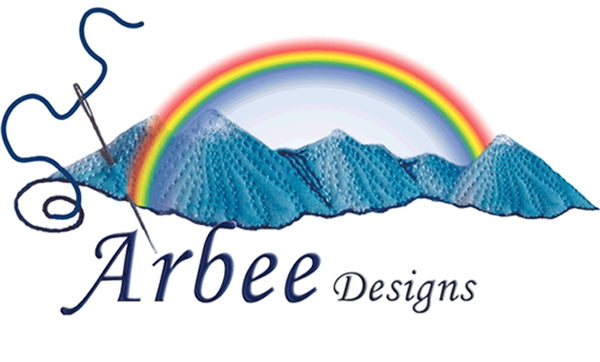Air Castle block is an interesting design and another nine-patch. It is also a great design to add in corners of borders for quilts like Entwined Star by Anita Eaton.
This block is a great way of experimenting with different forms of triangle construction. I am using three different techniques to form the three different units. The corner units are half square triangles (HST), the middle unit is a square-in-a-square block where I use snowball corners and the star points have both quarter square triangles (QST) and HST.

Air Castle quilt block
You will need three fabrics - dark, medium and light as well as a background fabric. I used the orange as my light and the green and orange batik as my medium.

fabric squares cut
Here are the cutting instructions for three different sizes: 6", 9" and 12" finished.
|
6" finished |
9" finished |
12" finished |
|
|
Background Fabric: |
TWO 3" sqs |
TWO 4" sqs |
TWO 5" sqs |
|
Dark Fabric: |
ONE 3 1/4" sq |
ONE 4 1/4" sq |
ONE 5 1/4" sq |
|
Medium Fabric: |
TWO 3" sqs |
TWO 4" sqs |
TWO 5" sqs |
|
Light Fabric: |
TWO 3" sqs |
TWO 4" sqs |
TWO 5" sqs |
Let's start with the corner units - HST squares.
You will need the TWO medium fabric squares and the TWO background squares of the same size. Draw a line through the diagonal, corner to corner on the wrong side of the background squares, then sew 1/4" on both sides of the line. Tip: It's ok to sew a slightly less than 1/4" seam here because you'll be trimming the unit to accurate size.

half square triangles
Now you can cut along the line and press open the triangles. Press the seam toward the background fabric (this helps with construction later). This will make a total of FOUR units. You will need to trim them to 2 1/2" [3 1/2" or 4 1/2" for the larger sizes] making sure the diagonal line on the ruler aligns with the seam.

FOUR HST units
The Center Unit
For this you will need the smallest light fabric square and the FOUR smallest background squares.
Start by drawing a diagonal line, corner to corner through the background squares, on the wrong side.
Place one of these background square in the corner of the light square so raw edges are even and diagonal line goes across the corner. Pieces should be right sides together.

Position bg square in corner of light fabric square
This time, stitch along the line. You can repeat for the opposite corner too.

First two corners sewn in place
Now you need to press those background squares in half so all points are meeting at the outer corner.

Press corners in place
After they are pressed well, add the other two corners in the same way to complete the center unit.

Center unit completed
The Star Points
Let's try something a little different so we are dealing with less bias seams resulting in a more accurate block. You will need your largest background square and your dark square for step 1 and the remaining light squares for step 2.
Step 1: On the wrong side of your background square, draw two diagonal lines, from corner to corner in both directions. You are going to sew 1/4" from the right side of the line only, from the corner to the middle of the square, stopping when you get to the line. You can see this below.

quarter square triangles alternative method
Note: If you want the dark fabric on the opposite side, then sew on the left side of the line. Here again, it is ok to sew a slightly smaller seam. This gives you more room for trimming accurately.
Next cut along both lines and press the triangle units open. No need to trim here.

quarter square triangles step 1
For the next step, cut your TWO light fabric squares in half through the diagonal.

FOUR of light triangles - two layers
You will sew these triangles to the triangles in the first step. Sew with the plain (light) triangles on top. This helps prevent stretching the seam as you sew.

Join the HST and QST together
Once joined, trim them using your ruler aligning the diagonal lines of the ruler to the seams of the block. You will need to trim them to 2 1/2" [3 1/2" or 4 1/2" for the larger sizes].

star points
Joining the Units
Now you have made all your units, so lay them out, rotating them as necessary to look like the photo below.

Units layout
First sew the units in rows. Tip: When stitching the center unit, sew with that unit on top so you can see where the seams intersect. That's where you want to sew through so your points are perfect.

make perfect points by stitching through intersecting seams
Here are the rows.

rows made
and finally join the rows to create your Air Castle block.

Air Castle Block finished
These are not my usual colors, but I really like this combination. It's bright and cheery don't you think?




2 comments
Thank you, Alison. I’m glad you find it useful. Yes, please credit me by adding this website to any tutorials you use. Happy teaching!
I’ve never seen this method for QSTs before and it’s genius! I’d like to use it when I teach patchwork, and will happily credit you in any written tutorials I use it in.